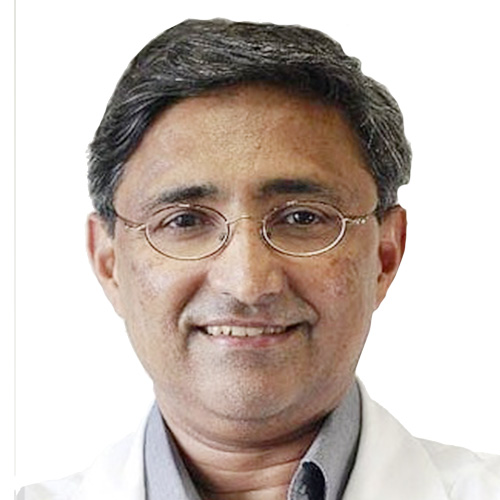Our Doctors
Ask us Anything About Cancer
Ask us anything, Cancer.
Frequently Asked Questions
Cancer is a group of cells in a human/animal body that have lost control of their ability to divide in a controlled fashion creating a group of out-of-control, dividing and growing cancer cells, which is known as a tumor that can grow quickly or slowly.
Under normal conditions, cells grow, divide, become old, and die. Then, in most cases, they’re replaced by new cells. But sometimes cells mutate, grow out of control, and form a mass, or tumor, instead of dying.
Tumors can be benign (noncancerous) or malignant (cancerous). Cancerous tumors can attack and kill the body’s tissues. They can also spread to other parts of the body, causing new tumors to form. This process is called metastasis and it represents cancer that has advanced to a late stage.
Cancer is, in fact, a genetic disease. This is because cancer is caused by mutations or changes to genes that control the way cells function, causing them to behave irregularly. These mutations can be inherited, as they are in about 5-10 percent of all cancer cases, but it’s much more likely that these gene changes occur during a person’s lifetime due to other factors other than genetics. It is advisable for someone who has a known family history of hereditary cancer, to undergo genetic testing to understand the susceptibility to cancers.
Anyone can get cancer, although the risk goes up with age. Risk of getting cancer depends on several other factors like body’s immunity, lifestyle habits (smoking, drinking alcohol), family history of cancer, excessive consumption of high calorie foods, trans-fat rich foods, environmental factors, among others.
As said, some cancers grow in places where they won’t cause any signs or symptoms until they have advanced. For example, pancreatic cancer usually doesn’t cause any signs or symptoms until it grows large enough to press on other structures, causing pain, or manifesting signs of jaundice, which is yellowing of the skin.
Self-examination of common symptoms can help early detect cancers.
SOME SYMPTOMS TO WATCH OUT FOR
Remember CAUTION:
C : Change in bowel or bladder habits
A : A wound that does not heal
U : Unusual bleeding or discharge
T : Thickening or lump in the breast or elsewhere
I : Indigestion or difficulty in swallowing
O : Obvious change in a wart or mole
N : Nagging cough or hoarseness of voice
Screening refers to tests and exams used to find cancer in people who don’t have symptoms. Early detection means finding and diagnosing cancer earlier than if a person would wait for symptoms to start. Screening increases the chance of detecting certain cancers early when they might be easier to treat. The outcome or success of cancer treatment is very high when detected early. There are tests that can screen for breast and cervix cancers. Book a Karkinos Healthcare’s cancer screening test today to early detect and cancel cancer. Remember prevention is always better than cure!
Cancer typically has four stages (Stage 1-4). Some cancers even have a stage 0 (zero). Here’s what these stages mean:
- Stage 0: This stage means the cancer is still found in the place it started and hasn’t spread to nearby tissues. Stage 0 cancers are often curable.
- Stage I: This stage usually represents a small tumor or cancer that hasn’t grown deeply into nearby tissues. It’s sometimes called early-stage cancer.
- Stages II and III: Usually these stages represent larger cancers or tumors that have grown more deeply into nearby tissues. They also may have spread to lymph nodes. However, they haven’t spread to other organs or parts of the body.
- Stage IV: Cancer in this stage has spread to other organs or parts of the body. It may be referred to as metastatic or advanced cancer.
Cancer is the uncontrolled growth of abnormal cells anywhere in a body. These abnormal cells are termed cancer cells, malignant cells, or tumor cells. Many cancers and the abnormal cells that compose the cancer tissue are further identified by the name of the tissue that the abnormal cells originated from (for example, breast cancer, lung cancer, colon cancer). Cancer is not confined to humans; animals and other living organisms can get cancer. Below is a schematic that shows normal cell division and how when a cell is damaged or altered without repair to its system, the cell usually dies. Also shown is what occurs when such damaged or unrepaired cells do not die and become cancer cells and show uncontrolled division and growth – a mass of cancer cells develop. Frequently, cancer cells can break away from this original mass of cells, travel through the blood and lymph systems, and lodge in other organs where they can again repeat the uncontrolled growth cycle. This process of cancer cells leaving an area and growing in another body area is termed metastatic spread or metastasis. For example, if breast cancer cells spread to a bone, it means that the individual has metastatic breast cancer to bone. This is not the same as “bone cancer,” which would mean the cancer had started in the bone.
There are over 200 types of cancers; most can fit into the following categories according to the research:
- Carcinoma: Cancer that begins in the skin or in tissues that line or cover internal organs.
- Sarcoma: Cancer that begins in bone, cartilage, fat, muscle, blood vessels, or other connective or supportive tissue.
- Leukemia: Cancer that starts in blood-forming tissue such as the bone marrow and causes large numbers of abnormal blood cells to be produced and enter the blood.
- Lymphoma and myeloma: Cancers that begin in the cells of the immune system.
- Central nervous system cancers: Cancers that begin in the tissues of the brain and spinal cord.
How does cancer start?
Your body is made up of many different types of cells. Under normal conditions, cells grow, divide, become old, and die. Then, in most cases, they’re replaced by new cells. But sometimes cells mutate grow out of control, and form a mass, or tumor, instead of dying. Tumors can be benign (noncancerous) or malignant (cancerous). Cancerous tumors can attack and kill your body’s tissues. They can also spread to other parts of the body, causing new tumors to form there. This process is called metastasis and it represents cancer that has advanced to a late stage.
Warning Signal of Cancer:
Remember CAUTION:
C : Change in bowel or bladder habits
A : A wound that does not heal
U : Unusual bleeding or discharge
T : Thickening or lump in the breast or elsewhere
I : Indigestion or difficulty in swallowing
O : Obvious change in a wart or mole
N : Nagging cough or hoarseness of voice
Early Detection of Cancer
• Create awareness about the early warning signs of cancer
• Encourage breast awareness
• Encourage oral self-examination
• Create awareness about symptoms of cervical cancer
• Examine, as a routine, the oral cavity of patients with history of tobacco use
• Offer clinical breast examination/ screening for cervical cancer to any woman over 30 years presenting to health facility.
• Promptly refer any person with a suspicious lesion for accurate diagnosis and treatment
A List of References about Cancer:
1. MOHFW, Govt of India: https://main.mohfw.gov.in/sites/default/files/3651434918nccp4_0.pdf
2. India Against Cancer: http://cancerindia.org.in/faqs/
3. Indian Cancer Society: https://www.indiancancersociety.org/cancer-information/
4. Global Cancer Concern India: https://www.globalcancer.org/faq-on-cancer/
5. National Health Mission: https://nhm.gov.in/index1.php?lang=1&level=3&sublinkid=1122&lid=640
K-Vani
Latest News
Thought Leadership, Articles, Whitepapers, Podcasts and much more







